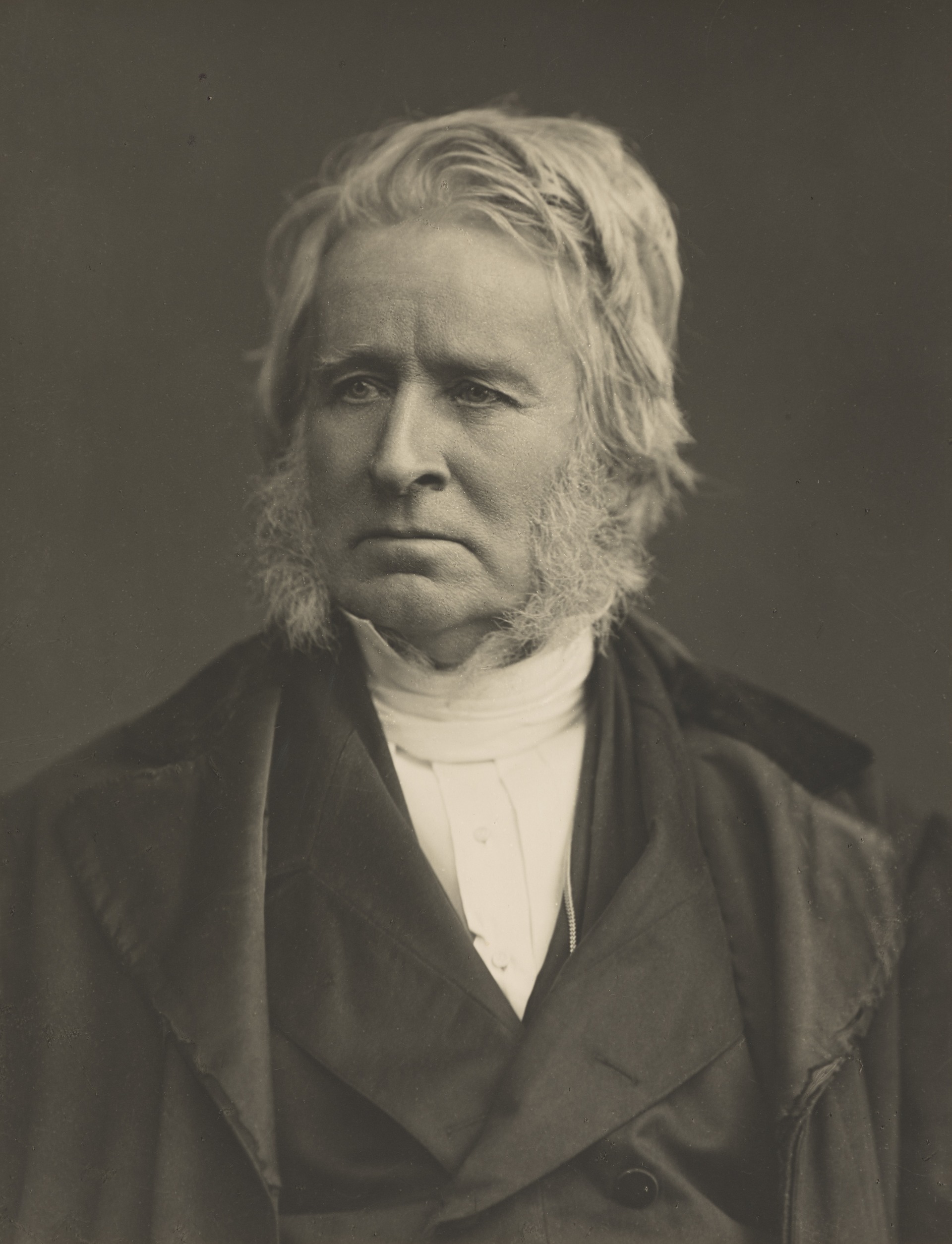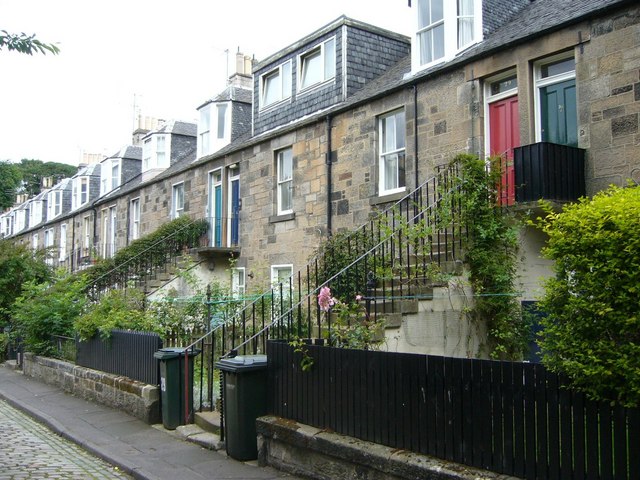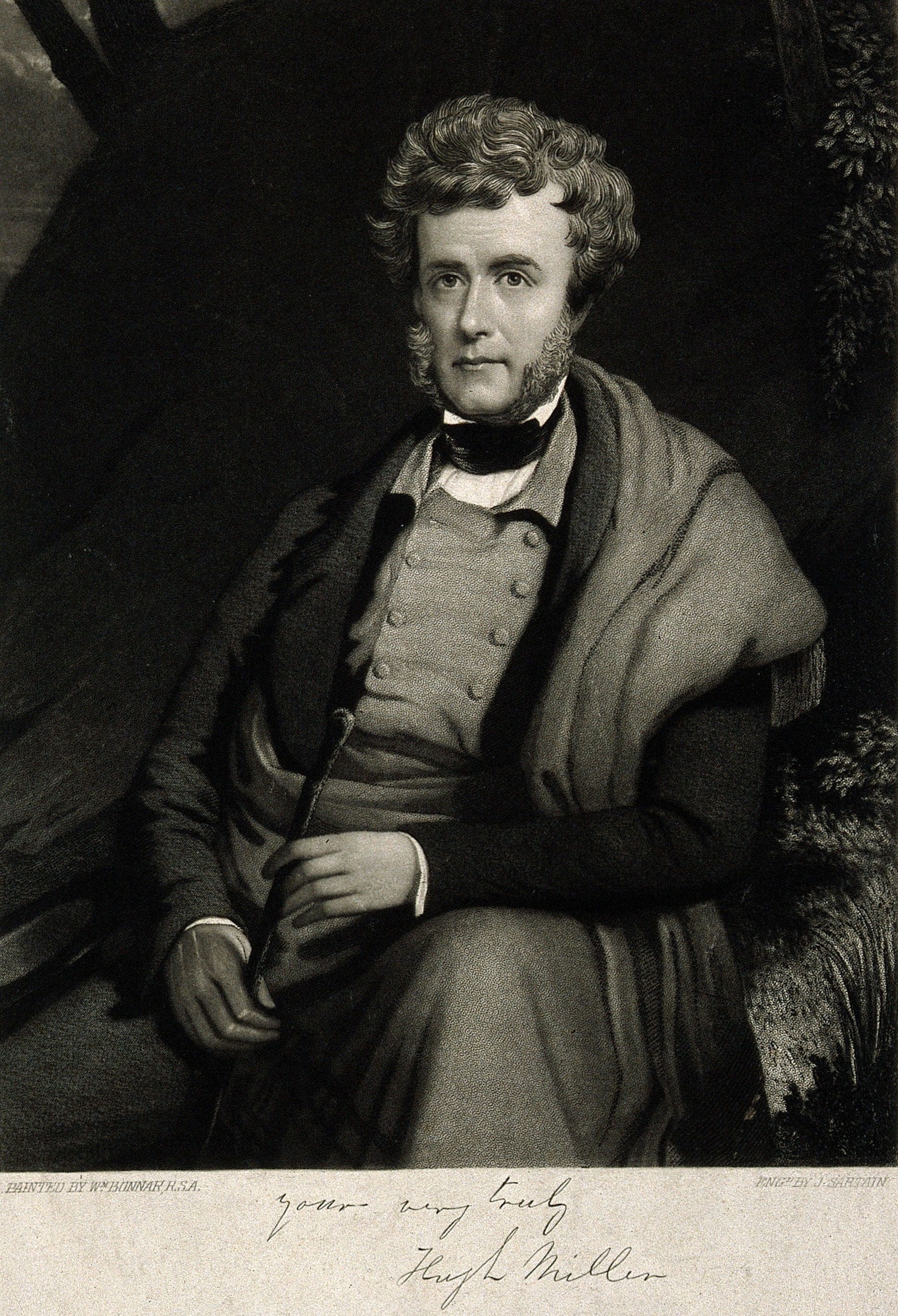|
James Begg
James Begg (31 October 1808 in New Monkland, Lanarkshire, Scotland – 29 September 1883) was a minister of the Free Church of Scotland who served as Moderator of the General Assembly 1865/66. Life He was born in the manse at New Monkland the son of James Begg of the Church of Scotland. He studied Divinity at Glasgow University graduating MA in 1824 and was licensed by the Presbytery of Hamilton in 1829 and was ordained as a minister by the Church of Scotland at Maxwelltown in Dumfriesshire in 1830. In 1831 he became assistant to Rev Dr Jones at Lady Glenorchy's Church in Edinburgh, and in 1832 moved to the Middle Parish Church in Paisley before being translated back to Edinburgh to serve Liberton parish in 1835. Begg left the established Church of Scotland at the Disruption of 1843. He then became a minister of the Free Church of Scotland, serving Newington Free Church, but he was branded a 'disrupter of the peace' within the Free Church itself. The church was one ... [...More Info...] [...Related Items...] OR: [Wikipedia] [Google] [Baidu] |
Hill & Adamson
Hill & Adamson was the first photography studio in Scotland, set up by painter David Octavius Hill and engineer Robert Adamson in 1843. During their brief partnership that ended with Adamson's untimely death, Hill & Adamson produced "the first substantial body of self-consciously artistic work using the newly invented medium of photography."Daniel, Malcolm (2004). ''Heilbrunn Timeline of Art History''. Watercolorist John Harden, on first seeing Hill & Adamson's calotypes in November 1843, wrote, "The pictures produced are as Rembrandt's but improved, so like his style & the oldest & finest masters that doubtless a great progress in Portrait painting & effect must be the consequence." Free Church of Scotland Hill was present at the Disruption Assembly in 1843 when over 450 ministers walked out of the Church of Scotland assembly and down to another assembly hall to found the Free Church of Scotland. He decided to record the dramatic scene with the encouragement of his friend ... [...More Info...] [...Related Items...] OR: [Wikipedia] [Google] [Baidu] |
Liberton, Edinburgh
Liberton is a suburb of Edinburgh, the capital of Scotland. It is in the south of the city, south of The Inch, east of the Braid Hills, north of Gracemount and west of Moredun. Incorporated into the city in 1920, the area was once home to Arthur Conan Doyle, who lived in a small cottage near the Braid Burn, which is now inside the grounds of the Cameron Toll Shopping Centre car park and is now a small school. Increased development in the area from the mid 1970’s to current times has seen Liberton develop into a popular choice for homeowners with areas such as Double Hedges, Alnwickhill and Howdenhall often representing better value for money than locations closer to the city centre. In recent years once thriving community pubs and hotels have closed with the likes of the Liberton Inn, Northfield House Hotel and The Marmion, formerly The Captains Cabin, all having been converted to or planning permission being sought for retail premises or flats. Derivation The name, of ... [...More Info...] [...Related Items...] OR: [Wikipedia] [Google] [Baidu] |
James A
James is a common English language surname and given name: *James (name), the typically masculine first name James * James (surname), various people with the last name James James or James City may also refer to: People * King James (other), various kings named James * Saint James (other) * James (musician) * James, brother of Jesus Places Canada * James Bay, a large body of water * James, Ontario United Kingdom * James College, a college of the University of York United States * James, Georgia, an unincorporated community * James, Iowa, an unincorporated community * James City, North Carolina * James City County, Virginia ** James City (Virginia Company) ** James City Shire * James City, Pennsylvania * St. James City, Florida Arts, entertainment, and media * ''James'' (2005 film), a Bollywood film * ''James'' (2008 film), an Irish short film * ''James'' (2022 film), an Indian Kannada-language film * James the Red Engine, a character in ''Thomas the Tank En ... [...More Info...] [...Related Items...] OR: [Wikipedia] [Google] [Baidu] |
Daniel Macnee
Sir Daniel Macnee FRSE PRSA LLD (4 June 1806, Fintry, Stirlingshire – 17 January 1882, Edinburgh), was a Scottish portrait painter who served as president of the Royal Scottish Academy (1876). Life He was born at Fintry in Stirlingshire. At the age of thirteen he was apprenticed, alongside Horatio McCulloch and Leitch the water colourist, to the landscape artist John Knox. He afterwards worked for a year as a lithographer, and was employed by a company in Cumnock, Ayrshire (Smiths of Cumnock), to paint the ornamental lids of their sycamore-wood snuff-boxes. He studied in Edinburgh at the Trustees' Academy, where he supported himself by illustrating publications for William Home Lizars the engraver. Moving to Glasgow, he established himself as a fashionable portrait painter. In 1829 he was admitted as a member of the Royal Scottish Academy. He does not appear as an independent property owner until 1840 when he is listed as a portrait painter living at 126 West Regent ... [...More Info...] [...Related Items...] OR: [Wikipedia] [Google] [Baidu] |
Colony Houses
The colony houses of Edinburgh were built between 1850 and 1910 as homes for artisans and skilled working-class families by philanthropic model dwellings companies. The first development was the Pilrig Model Buildings, near Leith Walk. Later developments across the city were built by the Edinburgh Cooperative Building Company Limited, founded in 1861. The founders of this company were influenced by the Reverend Dr. James Begg and the Reverend Dr. Thomas Chalmers, ministers of the Free Church of Scotland, who campaigned to improve the housing conditions of the poor. Description Streets with colony houses are found in ten locations within Edinburgh: * Abbeyhill * Dalry Place, Haymarket * Leith Links, Leith * Lochend Road, Lochend * North Fort Street, Leith * Rosebank Cottages, Fountainbridge * Shaw Colonies, Pilrig * Shandon * Slateford * Stockbridge The developments at Stockbridge, Dalry, Shaw Colonies, and Rosebank Cottages are category B listed buildings. Characteristic ... [...More Info...] [...Related Items...] OR: [Wikipedia] [Google] [Baidu] |
Thomas Chalmers
Thomas Chalmers (17 March 178031 May 1847), was a Scottish minister, professor of theology, political economist, and a leader of both the Church of Scotland and of the Free Church of Scotland. He has been called "Scotland's greatest nineteenth-century churchman". He served as Vice-president of the Royal Society of Edinburgh from 1835 to 1842. The New Zealand town of Port Chalmers was named after Chalmers. A bust of Chalmers is on display in the Hall of Heroes of the National Wallace Monument in Stirling. The Thomas Chalmers Centre in Kirkliston is named after him. Early life He was born at Anstruther in Fife, the son of Elizabeth Hall and John Chalmers, a merchant. Age 11 Chalmers attended the University of St Andrews studying mathematics. In January 1799 he was licensed as a preacher of the gospel by the St Andrews presbytery. In May 1803, after attending further courses of lectures at the University of Edinburgh, and acting as assistant to the professor of mathemati ... [...More Info...] [...Related Items...] OR: [Wikipedia] [Google] [Baidu] |
Hugh Miller
Hugh Miller (10 October 1802 – 23/24 December 1856) was a self-taught Scottish geologist and writer, folklorist and an evangelical Christian. Life and work Miller was born in Cromarty, the first of three children of Harriet Wright (''bap''. 1780, ''d''. 1863) and Hugh Miller (''bap''. 1754, ''d''. 1807), a shipmaster in the coasting trade. Both parents were from trading and artisan families in Cromarty. His father died in a shipwreck in 1807, and he was brought up by his mother and uncles. He was educated in a parish school where he reportedly showed a love of reading. It was at this school that Miller was involved in an altercation with a classmate in which he stabbed his peer's thigh. Miller was subsequently expelled from the school following an unrelated incident. At 17 he was apprenticed to a stonemason, and his work in quarries, together with walks along the local shoreline, led him to the study of geology. In 1829 he published a volume of poems, and soon afterwards ... [...More Info...] [...Related Items...] OR: [Wikipedia] [Google] [Baidu] |
Witness (religious Newspaper)
''Witness'' was an evangelical newspaper established in 1840 by Scottish geologist and writer Hugh Miller. Robert Candlish was instrumental in establishing Miller as the editor. He continued to edit the paper at an office on the Royal Mile in Edinburgh until his suicide in December 1856. He was the principal contributor to the publication, averaging over 10,000 words a week. William Anderson was sub-editor as was James Aitken Wylie James Aitken Wylie (9 August 1808 – 1 May 1890) was a Scottish historian of religion and Presbyterian minister. He was a prolific writer and is most famous for writing ''The History of Protestantism''. Life Wylie was born on 9 August .... References Presbyterianism in Scotland Newspapers established in 1840 Christian magazines 1840 establishments in Scotland {{Scotland-newspaper-stub ... [...More Info...] [...Related Items...] OR: [Wikipedia] [Google] [Baidu] |
Doctor Of Divinity
A Doctor of Divinity (D.D. or DDiv; la, Doctor Divinitatis) is the holder of an advanced academic degree in divinity. In the United Kingdom, it is considered an advanced doctoral degree. At the University of Oxford, doctors of divinity are ranked first in "academic precedence and standing", while at the University of Cambridge they rank ahead of all other doctors in the "order of seniority of graduates". In some countries, such as in the United States, the degree of doctor of divinity is usually an honorary degree and not a research or academic degree. Doctor of Divinity by country or church British Isles In the United Kingdom and Ireland, the degree is a higher doctorate conferred by universities upon a religious scholar of standing and distinction, usually for accomplishments beyond the Ph.D. level. Bishops of the Church of England have traditionally held Oxford, Cambridge, Dublin, or Lambeth degrees making them doctors of divinity. At the University of Oxford, docto ... [...More Info...] [...Related Items...] OR: [Wikipedia] [Google] [Baidu] |
Lafayette College
Lafayette College is a private liberal arts college in Easton, Pennsylvania. Founded in 1826 by James Madison Porter and other citizens in Easton, the college first held classes in 1832. The founders voted to name the college after General Lafayette, a hero of the American Revolution. Lafayette is considered a Hidden Ivy as well as one of the northeastern Little Ivies. Located on College Hill in Easton, the campus is in the Lehigh Valley, about west of New York City and north of Philadelphia. Lafayette College guarantees campus housing to all enrolled students. The college requires students to live in campus housing unless approved for residing in private off-campus housing or at home as a commuter. The student body, consisting entirely of undergraduates, comes from 46 U.S. states and territories and nearly 60 countries. Students at Lafayette have access to more than 250 clubs and organizations, including athletics, fraternities and sororities, special interest groups, ... [...More Info...] [...Related Items...] OR: [Wikipedia] [Google] [Baidu] |
Patrick Fairbairn
Patrick Fairbairn (28 January 1805 – 6 August 1874) was a Scottish Free Church minister and theologian. He was Moderator of the General Assembly 1864/65. Early life and career He was born in Halyburton, Greenlaw, Berwickshire, on 28 January 1805. Patrick was the second son of John Fairbairn, farmer, and Jessie Johnston, Middlestots. He was educated at Greenlaw School and studied at the University of Edinburgh at the age of 13. He graduated in 1826 and was licensed to preach by Presbytery of Duns on 3 October 1826. He began employment as a tutor in the family of Captain Balfour of Balfour and was ordained to Ringansay in Orkney on 28 July 1830 and remained there for six years. He translated to the Extension Church at Bridgeton, Glasgow on 16 March 1837. Fairbairn translated, and admitted to Salton, East Lothian on 25th June 1840. After the Disruption After the Disruption of 1843, Fairbairn joined the Free Church of Scotland. In 1852 he became assistant to Prof Macla ... [...More Info...] [...Related Items...] OR: [Wikipedia] [Google] [Baidu] |
David Cousin
David Cousin (19 May 1809 – 14 August 1878) was a Scottish architect, landscape architect and planner, closely associated with early cemetery design and many prominent buildings in Edinburgh. From 1841 to 1872 he operated as Edinburgh’s City Superintendent of Works (also known as the City Architect). Life Cousin was born in North Leith on 19 May 1809, the son of Isabella Paterson (1773-1851) and John Cousin (1781-1862), and was baptised in North Leith Church. Initially he trained under his father as a joiner, but went on to study mathematics with Edward Sang. He trained as an architect under William Henry Playfair, Scotland’s most eminent architect of the time, leaving Playfair's practice in 1831 to set up on his own. During this time he competed, but was unsuccessful, in the competition to design the Scott Monument. He established a partnership with Glaswegian engineer William Gale, and together they won two competitions for the design of the West Church in Greenock ... [...More Info...] [...Related Items...] OR: [Wikipedia] [Google] [Baidu] |








